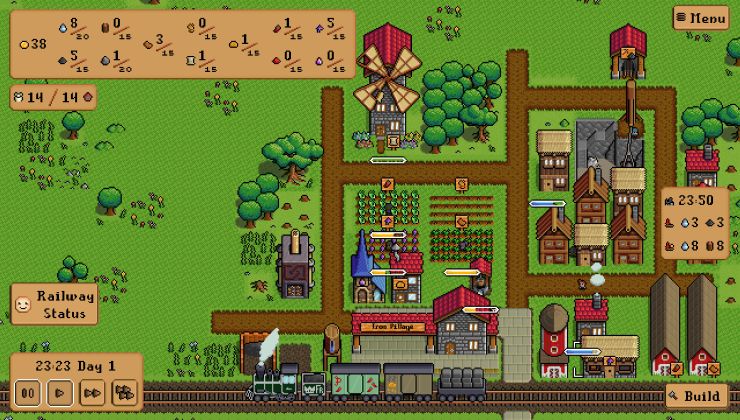NVIDIA just quietly released another fresh update to their special developer-focused Vulkan Beta Driver.
After moving it over to the 455 series at the end of September, they released driver version 455.26.01 on October 9 which is a small bug-fix cleanup with these changes:
- Reduce host memory consumption for descriptor memory when VkDescriptorSetVariableDescriptorCountAllocateInfo is used
- Handle SPIR-V 1.4 non-Input/Ouput entry point variables correctly
- Fixed a blending optimization that sometimes produced an incorrect result
- Fixed SPIR-V intersection shader compilation issue when multi entry point ray tracing modules are used
Reminder: This special Vulkan beta driver is where all the shiny new stuff goes in before making its way into the stable release for everyone. Really, it's mostly aimed at developers and serious enthusiasts. Unless you need what's in them, it's generally best to use the stable drivers.
The newest stable versions of the main NVIDIA driver for Linux are at 450.80.02 released on September 30 from their "long lived" series or 455.28 released on October 7 from their "short lived" series. The difference can be a little confusing, NVIDIA explained the difference between short / long lived drivers as:
Any given release branch is either long-lived or short-lived. The difference is in how long the branch is maintained and how many releases are made from each branch. A short-lived branch typically has only one or two (non-beta) releases, while long-lived branches will have several.
[…]
When we make changes to the driver, we evaluate the oldest branch the change needs to go into. New features go into whatever the latest branch is, while bug fixes go into the older branches and are integrated through the newer branches. So using a short-lived branch doesn’t mean that you miss out on fixes, it just means that you also get the latest features.
Want to keep up with the latest Linux driver updates? You can follow our dedicated Drivers tag, all our tags have an RSS feed you can follow.
Wish they would just mark l=long s=short and b=beta somewhere in there so people do not have to guess or look it up every time.They do on the main list.
They do on the [main list](https://www.nvidia.com/en-gb/drivers/unix/).Thank you ! Good to know. It does fall into the look it up category unfortunately, though.
I hope someone gets RTX titles working under Linux soon, that be neat. (via proton I guess)This is a common misconception by people, sometimes just poor wording that I keep seeing repeated.
RTX is supported on Linux, has been for multiple years already. What doesn't work is DXR, the DirectX-only Ray Tracing - there's different implementations remember. With NVIDIA they have their own Vulkan extensions, while Khronos work on the cross-vendor solution which is in progress for Vulkan.
Just to be more clear for people reading.
I think people still confuse the Ray Tracing Technology (Hardware) with the DXR API which is the software part that communicates with the hardware. When the AMD RDNA2 cards launch, they'll also be able to use DXR (DirectX Ray Tracing) and the Vulkan implementation when that is ready.
RTX is simply the name Nvidia gave to their cards to distinguish them from the Non-RT models. As far as I'm aware there are currently 2 titles that use Vulkan ray tracing which is Quake 2 RTX and Doom Eternal, as already pointed out though, Nvidia is using their own ray tracing Vulkan extension(s) for the Vulkan side [(Extension Details Here).](https://www.khronos.org/registry/vulkan/specs/1.2-extensions/man/html/VK_NV_ray_tracing.html)
My guess is, if AMD provides DXR support on Windows at the RDNA 2 release, DX12 Titles will be able to use RT feature out of the box.
Last edited by Avehicle7887 on 11 Oct 2020 at 9:06 pm UTC
So it’s no longer Nvidia only.











 How to set, change and reset your SteamOS / Steam Deck desktop sudo password
How to set, change and reset your SteamOS / Steam Deck desktop sudo password How to set up Decky Loader on Steam Deck / SteamOS for easy plugins
How to set up Decky Loader on Steam Deck / SteamOS for easy plugins
See more from me